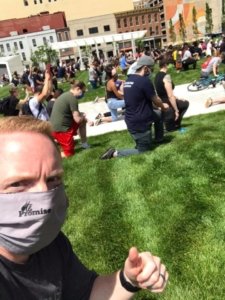 Should I share my story? It’s a question I get asked often. It’s a question I used to ask myself. I was asked the question again a couple of weeks ago. I was on a Zoom coffee call when the question came, almost out of leftfield. Should I share my story? This time the question caught me a bit off guard. I’m afraid my momentary confusion caused me to hesitate, it might have even caused me to stammer a bit. I’m afraid it might have caused my answer to seem less confident, less emphatic than I intended.
Should I share my story? It’s a question I get asked often. It’s a question I used to ask myself. I was asked the question again a couple of weeks ago. I was on a Zoom coffee call when the question came, almost out of leftfield. Should I share my story? This time the question caught me a bit off guard. I’m afraid my momentary confusion caused me to hesitate, it might have even caused me to stammer a bit. I’m afraid it might have caused my answer to seem less confident, less emphatic than I intended.
I can assure you that was not the case. I just was not expecting the conversation to turn in the direction it did. You see, this was the first time I had met this person. Typically, I get asked that question by people whose story I already know (at least somewhat). This being the first time we had met, it threw me off…at least momentarily. Let me answer now, with all the confidence and as emphatically as possible…”YES, YOU SHOULD SHARE YOUR STORY”. Your story is who you are, you should own your story! This was one of the most impactful recommendations I have ever received, and I think it can have as great an impact on you and your career as it did for me.
This person’s story was of a battle with alcoholism. They are recovering, but they are an alcoholic. You may be asking why on earth would someone share that with someone they had just met. Well, because it is a story of strength and courage. It is a story of vulnerability. Something in our conversation must have let them know it was a “safe zone” to tell the story and then ask the question. Little did they know the impact they would have on me because they shared. I was honored they felt they could share. They had no way of knowing the number of people in my life who battle the same affliction.
Why should you tell your story? Because sharing our stories creates an immediate connection. There is something about being vulnerable. There is something in creating trust between people. It’s funny how in sharing our stories and being vulnerable what we are really sharing is our strength. The connection created is real. The connection created is deep.
When I asked permission to share this story, they responded with “I can’t tell you how much it meant to me to feel vulnerable and safe enough to pose the question and be affirmed by someone else in a leadership role. My strength comes from my vulnerability and ability to connect with others on a deeper level. My alcoholism no longer defines me because I am no longer ashamed.” Powerful. The connection works both ways.
It was not more than a week later when I was confronted with the power of sharing one’s story again. This time it was with at a meeting of the Indy CIO Network. We had a guest facilitator, Paul Ashley of FirstPerson Advisors, we were to discuss mental wellbeing during a pandemic. Before the meeting, Paul shared his story with the group. Paul’s story is one of battling depression. His vulnerability connected with the group which led to a great discussion. Powerful. Several members shared their own stories. Based on the follow-up conversations, I know it has led to deeper connections between our members.
My point isn’t that your story has to include battling alcoholism, or depression, or cancer. It doesn’t have to include anything that dramatic. My point is your story is important. It is what makes you who are. Sharing it can create connection. Sharing it can show you care about other’s stories. Sharing it can help you to lead.
Post a comment, send an email, give me a call! I want to hear your stories!

 How are you? Don’t answer “I’m fine”. I’m being serious. How are you? You’ve been leading through some incredibly chaotic times! You’ve been taking care of your staff. You’ve been taking care of your family. You’ve been taking care of your friends. When was the last time you took a moment to check in on you?
How are you? Don’t answer “I’m fine”. I’m being serious. How are you? You’ve been leading through some incredibly chaotic times! You’ve been taking care of your staff. You’ve been taking care of your family. You’ve been taking care of your friends. When was the last time you took a moment to check in on you?  Last week’s Leadership Thought “
Last week’s Leadership Thought “ I have no words. Perhaps a funny thing to say, coming from a writer. I have no words…I don’t know what to say. Even now I struggle to find the words.
I have no words. Perhaps a funny thing to say, coming from a writer. I have no words…I don’t know what to say. Even now I struggle to find the words. Is Culture tied to place or space?
Is Culture tied to place or space?  With credit to Bob Dylan for a great lyric, these times certainly are changing. In the last 100 days or so, we have all experienced tremendous change, change in the way we work (and in a lot of cases this change meant a loss of work) and change in the way we live. As our economy slowly begins to open up, many want to return to “normal”. But, normal isn’t there. Normal has changed, because we have changed.
With credit to Bob Dylan for a great lyric, these times certainly are changing. In the last 100 days or so, we have all experienced tremendous change, change in the way we work (and in a lot of cases this change meant a loss of work) and change in the way we live. As our economy slowly begins to open up, many want to return to “normal”. But, normal isn’t there. Normal has changed, because we have changed. 



